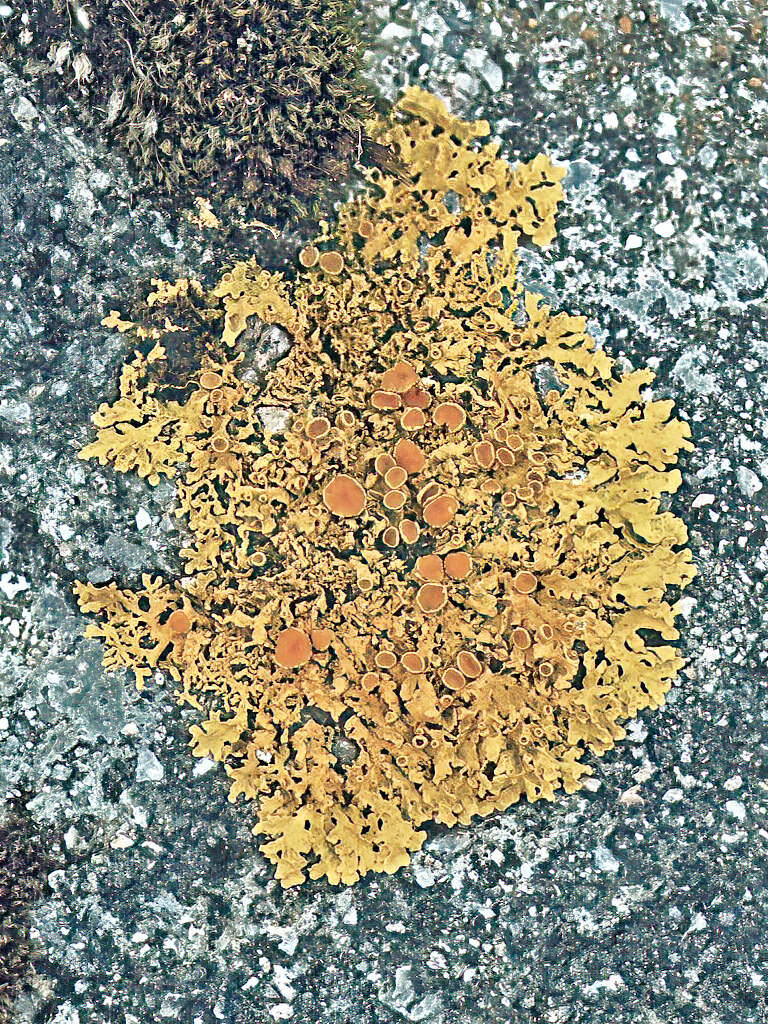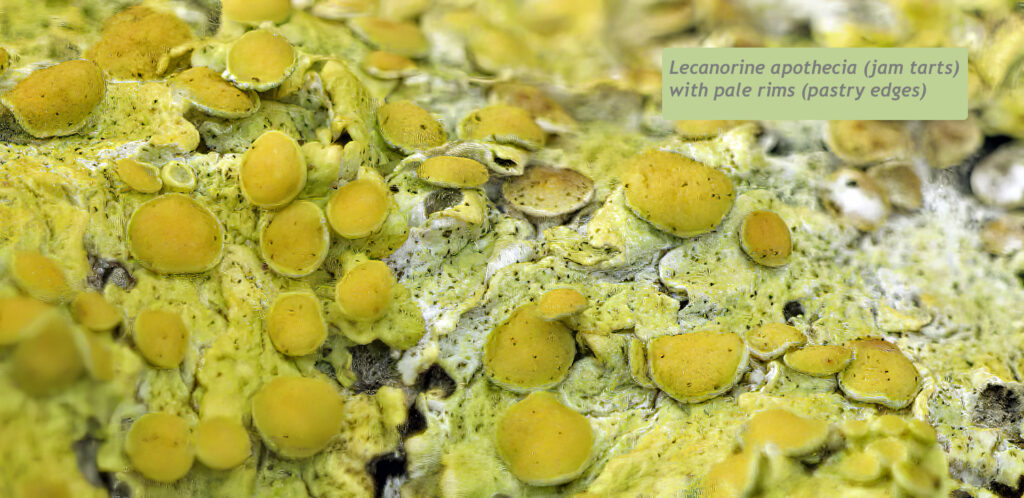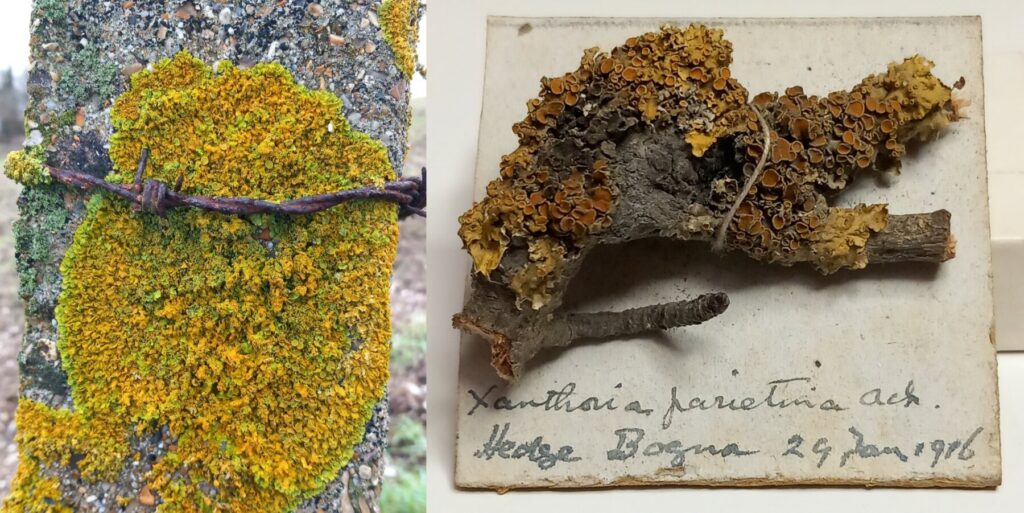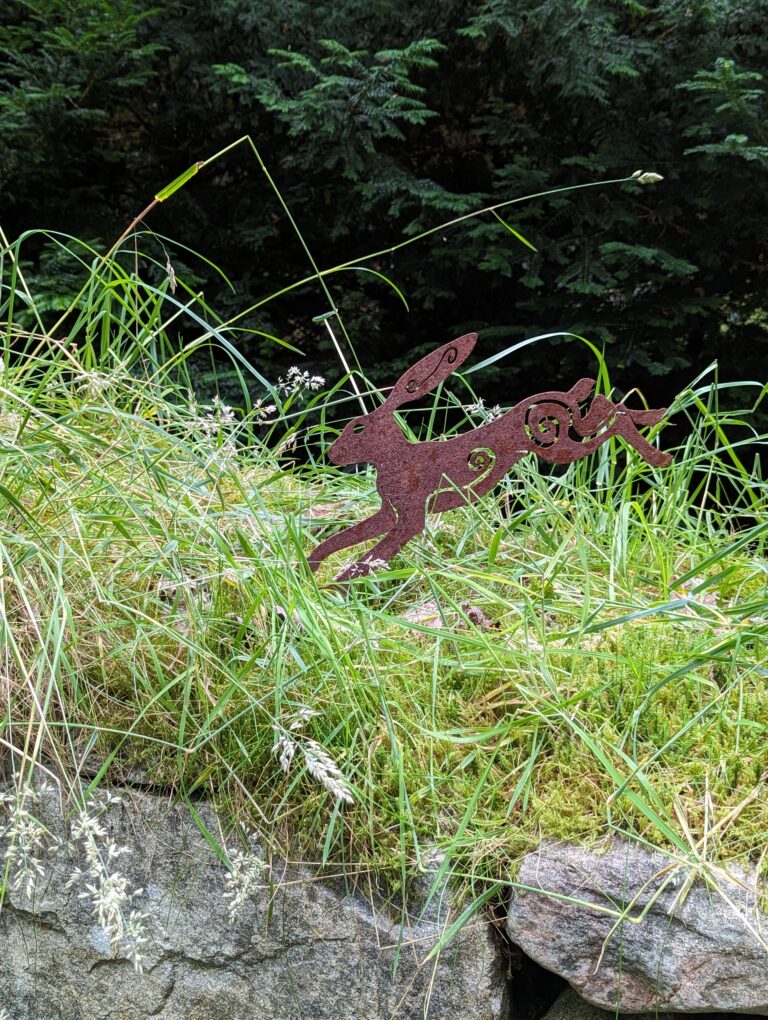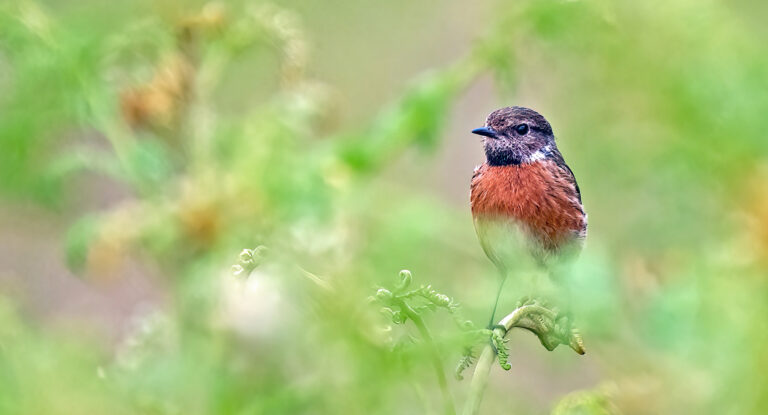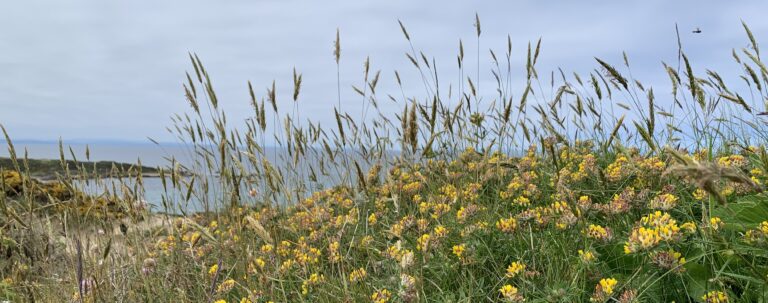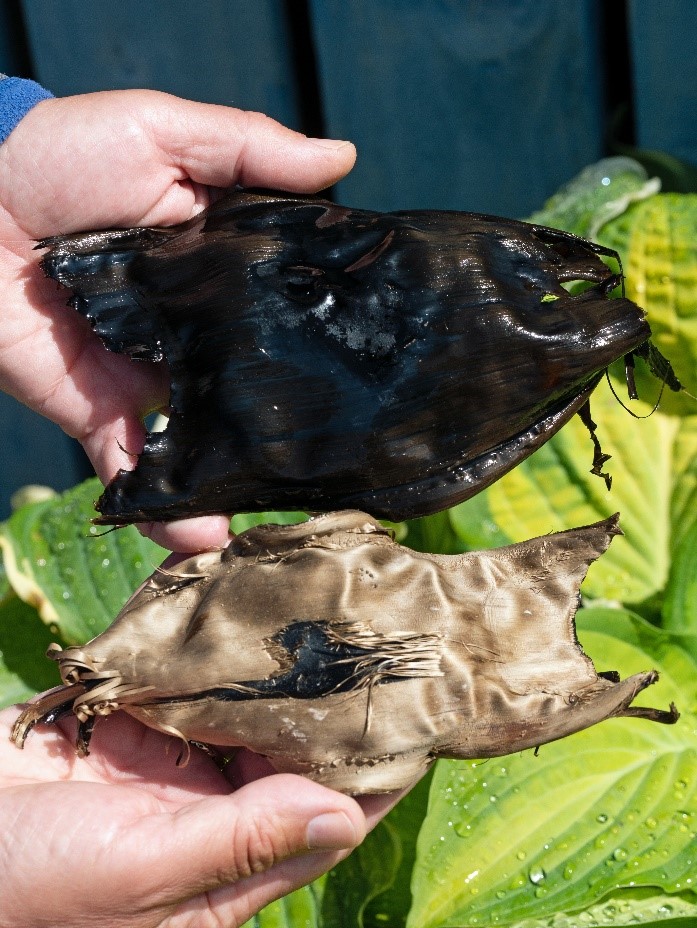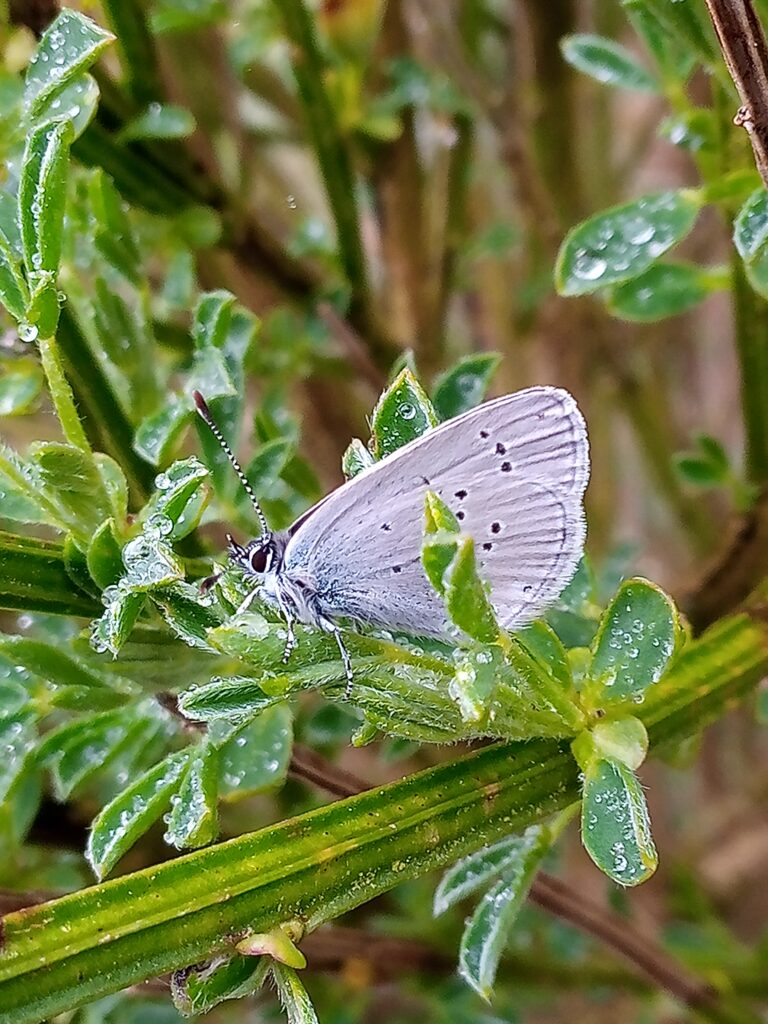By Susan Kirkup.
Xanthoria parietina is a foliose lichen in the family Teloschistaceae and is common throughout the UK and Ireland. It is also found across the world, in Europe, Africa, Asia, the Americas and Australia and is thought to be one of the most resistant foliose lichens to pollution.
It is referred to in Gaelic as ‘Rúsg-buidhe nan creag’ (yellow crust/scab of the rocks) and has many common names including common orange lichen, maritime sunburst lichen, yellow scales, golden shield, shore lichen and bird-perch lichen to name a few. These common names also relate to other Xanthoria species. This emphasises the importance of using the scientific name, so we all know which lichen we are talking about.
Xanthoria is from the Latin meaning ‘golden yellow’ and for the most part Xanthoria parietina is a bright yellow to orange species. The lichen produces a yellow chemical called parietin, which provides it with UV light protection. Specimens of the lichen found in shaded places can be more of a green/grey colour due to a reduced level of parietin present . The lichen can also appear more green in colour when wet, when the algal cells show through the more translucent body (thallus) of the lichen.
WHERE TO SEE IT
Parietina is from the Latin meaning ‘old ruined walls’, and it grows in a range of habitats, in coastal, rural and urban locations including walls, roofs and rocks, but most often on tree bark and wood. It is especially visible on trees in winter where it often wraps completely around branches. It forms patches on rocks and walls up to a 10cm spread, and often the centre may die out in larger patches . In coastal shore locations it often forms an orange band on rock above the tideline.
WHEN TO SEE IT
All year round. As with most lichen species, it is always around us waiting to be spotted. This is what makes lichenology such an excellent study for the autumn and winter months, when the wildflowers are over and many other species are on the wane, Xanthoria lichens give a welcome splash of colour during the gloomy winter days.
WHAT TO LOOK FOR
The Body of the Lichen – Apart from the obvious golden yellow striking colouration previously mentioned, Xanthoria parietina is a foliose lichen. This means that the main body (thallus) of the lichen looks leafy (lobed like oak leaves). In this case flattened leafy structures with wrinkled round-lipped overlapping lobes from 1mm up to 7mm wide. The lobes can be narrow in exposed coastal habitats.

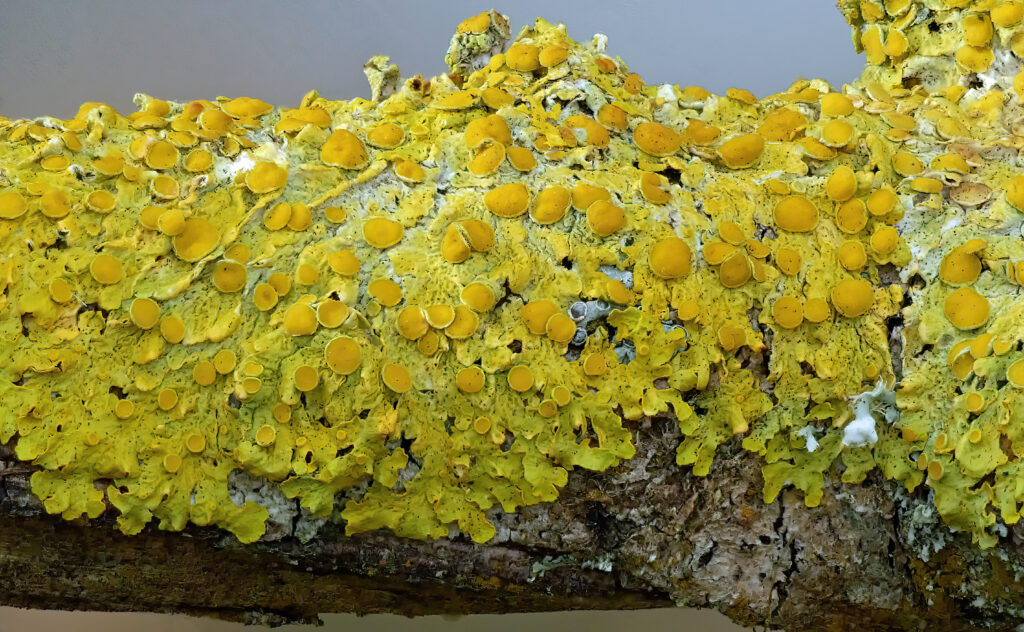
The thallus also has a defined upper and lower side. The lower side of the thallus in Xanthoria parietina is pale and can be seen by lifting the edges of the lobes. Often the thallus is closely attached to the substrate (rock, tree bark etc) and as can be seen in the next photo some bark remains on the sample collected. At the very edge of the underside of the thallus, the pale colour in comparison with the bright yellow can be detected.
Apothecia – these are the fruiting bodies of the lichen and one of the ways in which some lichens reproduce. Xanthoria parietina has a particular form of apothecia which are called lecanorine and resemble jam tarts, or perhaps lemon curd tarts in this case. They are disc shaped structures with an outer (pastry like) rim, the centre being a bright yellow/orange colour and the rim having a noticeable paler colouration, similar to the rest of the lichen body. Apothecia can vary a great deal in shape, size and colour in different species, they can for instance be almost submerged in the thallus, in Xanthoria parietina they can appear to be almost stalked, resembling tiny flat mushrooms.
Rhizines – these are root-like structures on the underside of the lichen which anchor the thallus to it’s substrate. They are not roots in the usual sense in that they do not absorb water, but simply tether the lichen to the rock or tree where it is growing. Only foliose lichens have rhizines. By lifting the edge of the lichen, the rhizines can be seen.
As with apothecia, rhizines can vary in colour, size and form. Some are short fine and sparse, some long thick and dense, some straight, branched or like bottlebrushes. Sometimes they are difficult to see without a loupe (magnifier). In this species, the rhizines are pale and quite sparse.
Xanthoria parietina – comparison of samples collected over 100 years apart. On the left a sample from Jan. 2023 and on the right a sample from Jan 1916 held in the collection at Cumberland House Natural History Museum in Portsmouth.
Interesting Facts
In the past it has been used as a treatment for jaundice due to its yellow colour.
It was chosen as a model organism for genomic sequencing by the US Department of Energy.
First described as a species by Carl Linnaeus in 1753 as Lichen parietinus.
Victorian botanist and naturalist Leo Hartley Grindon, describes lichens as ‘Gems of Nature’ in one of his publications from 1882. I think that Xanthoria parietina certainly fits the bill for this.
Similar species and their differences:
- Xanthoria calcicola. Few if any apothecia.
- Xanthoria elegans. Bright orange/red colour with narrow straplike lobes.
- Xanthoria polycarpa. Very crowded apothecia, difficult to see the thallus.
- Xanthoria aureola. With narrow strap-like lobes and very few or no apothecia.
- Caloplaca species. Similar colour but these are crustose lichens.
References:
British Lichen Society Xanthoria parietina page
Cumberland House Natural History Museum
Lichens – An Illustrated Guide to the British and Irish Species – 2018 7th Rev. Edition Frank S. Dobson
All images © of Susan Kirkup unless otherwise state.


